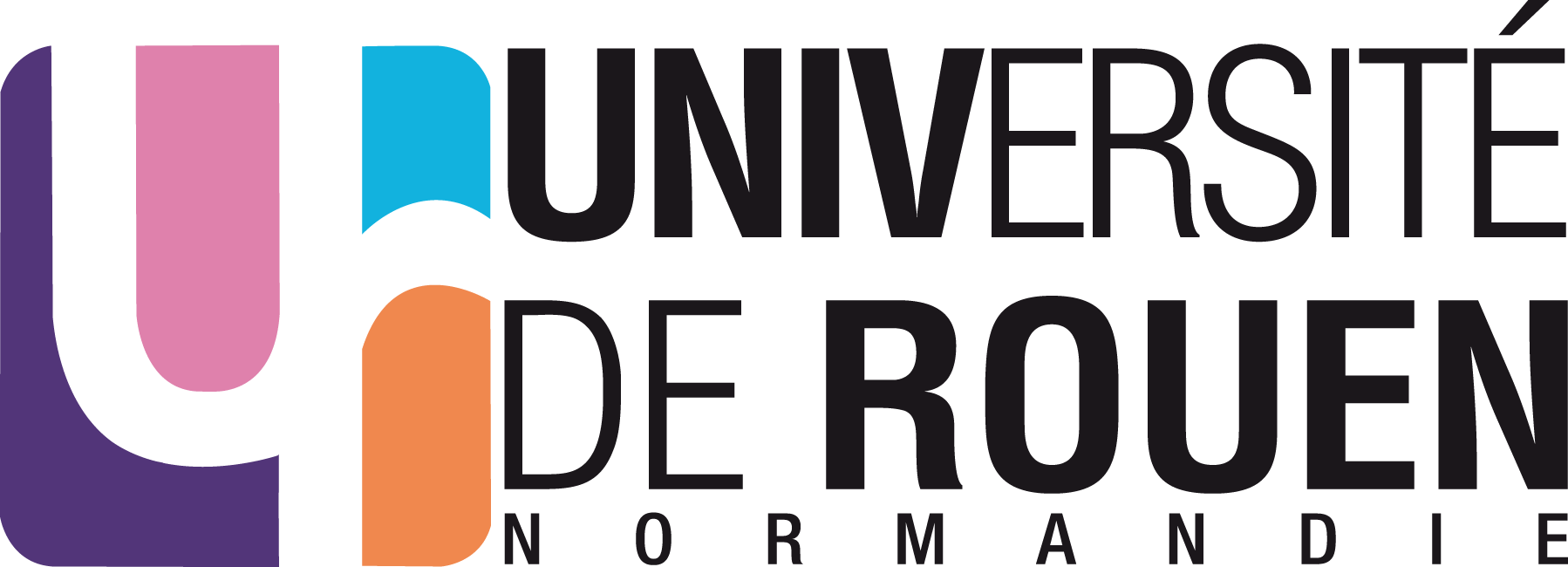Orateurs invités
Orateurs invités
Cliquez ici pour voir les orateurs invités
Par ordre alphabétique :
Christian Angelberger - IFPEN
LES of non-cyclic flow and combustion in spark-ignition engines
The design of modern spark-ignition engines for cars has to increasingly address flow and combustion phenomena on an engine cycle to engine cycle basis. Standard Computational Fluid Dynamics tools presently used during the design process are however based on a statistical approach that is only capable of addressing turbulent flow and combustion for phase averaged engine cycles and can thus not predict non-cyclic flow and combustion phenomena. Large-Eddy Simulation (LES) techniques, consisting in resolving spatially filtered Navier-Stokes equations exactly for the largest flow scales, and modelling the unresolved scales, have been shown to allow addressing non-cyclic flow and combustion.
After a short introduction on the principles of LES, and an outline of the interest of addressing non-cyclic engine functioning, recent applications of LES to production type engines are presented. A first one concerns the exploration of the sources of sporadic non-nominal cycles in a direct injection engine that result from interactions between the fuel spray and internal flow. A second one presents an exploration of the sources and parameters of abnormal engine knock. We conclude with an outlook on the usage of an Empirical Mode Decomposition method for analysing complex unsteady flow fields in engines.
Leonardo Baffico - LMNO (Université Caen)
The Stokes equation in a periodically perforated domain with slip boundary condition of friction type on the interface.
We study the Stokes equation posed in a periodically perforated domain with small period ε > 0. On the interface between the fluid and the holes we use a slip boundary condition of friction type. This problem models the flow of an incompressible Newtonian viscous fluid in a porous media in the case where, if the fluid shear stress reaches a threshold value, slip on the fluid-solid interface may occur. We use two-scale asymptotic expansion and two-scale convergence methods to deduce a two-scale homogenized problem. Then, using the incompressibility of the fluid, we derive a non-linear Darcy equation for the macroscopic homogenized pressure. For this non-linear problem, we study a finite element approximation, which involves the discretization of both the macroscopic equation and the microscopic equation (a periodic Stokes problem in the reference cell with slip boundary condition). Finally, some numerical results, obtained with FreeFEM++, will be presented.
Loïc Boudet - DGA
Jean-Matthieu Etancelin - LMAP (Université de Pau)
Reactive flows at pore scale with hybrid computing
The purpose of this talk is to describe how to use efficiently a remeshed vortex method to perform numerical simulation of a reactive flow at pore scale.
The framework of remeshed vortex method will be presented in a context of a hybrid computing using multiple GPUs and CPUs. Some numerical illustrations will be presented.
Pascal Frey - LJLL (Sorbonne Université)
Deux exemples de collaborations autour du calcul scientifique
[ou comment la diversité l’emporte sur l’expertise.]
Dans cet exposé, nous montrerons à travers deux applications comment la modélisation mathématique et le calcul scientifique permettent de "réconcilier la science et les humanités”. A une échelle modeste, nous contribuons à concilier calcul et données, tant il semble que le calcul est souvent ancré dans le champ des sciences, tandis que la donnée est l’apanage des humanités, sans doute pour des raisons historiques sinon chronologiques. C’est avec cette ambition et dans cette perspective transdisciplinaire que l’institut des sciences du calcul et des données a été crée à Sorbonne Université.
Jean-Luc Guermond - Texas A&M
Invariant domain preserving approximation and convex limiting for hyperbolic system
We introduce an approximation technique for nonlinear hyperbolic systems with sources that is invariant domain preserving. The method is discretization-independent provided elementary symmetry and skew-symmetry (generic) properties are satisfied by the discretization.
The method consists of blending a low-order method and a high-order method. The low-order method is formally first-order accurate in space and invariant domain preserving. The high-order method may violate the invariant domain properties, but this defect is corrected a posteriori by a limiting technique that we call convex limiting. After limiting, the resulting methods satisfy all the invariant domain properties that are imposed by the user and is formally high-order accurate. The two key novelties are that (i) limiting is done by enforcing bounds on quasiconcave functionals; (ii) the bounds that are enforced on the solution at each time step ; are necessarily satisfied by the low-order approximation.
Frédéric Hecht - LJLL (Sorbonne Université)
FreeFem++ a toolbox to do solve PDE
FreeFem++ is a powerful and flexible software to solve numerically partial differential equations (PDE) in IR2) and in IR3) with finite elements methods. The FreeFem++ language allows for a quick specification of linear PDE’s, with the variational formulation of a linear steady state problem and the user can write they own script to solve non linear problem and time depend problem. You can solve coupled problem or problem with moving domain or eigenvalue problem, do mesh adaptation, compute error indicator, etc ... This talk will gives an overview of the main characteristics of FreeFem++ and the new features of the version 4.
Nicholas Kevlahan - McMaster
Towards a wavelet-based dynamically adaptive climate model
We propose a general framework for a wavelet-based multiscale dynamically adaptive climate model. This method is based on iterative dyadic refinement of the icosahedron, which generates a sequence of approximation subspaces (i.e. different grid levels) with arbitrarily fine local resolution controlled by a single parameter limiting the errors in the tendencies at each time step. Biorthogonal wavelets are used to measure local error and to restrict or prolongate fluxes between different grid levels. The adaptivity is designed to preserve the mimetic properties (such as mass conservation) of the underlying discretization.We present results for a hydrostatic implementation based on the DYNAMICO discretization. The grid is adapted horizontally using the strictest condition over all vertical layers and the Lagrangian vertical coordinates are conservatively remapped periodically onto the initial grid. We will describe the results of a number of test cases, as well as assess parallel performance. The goal of this project is to help assess the potential of dynamical adaptivity to improve the computational performance and numerical accuracy of climate models.
Pierre-François Lavallée - IDRIS (CNRS)
Èvolutions matérielles et logicielles dans un centre national HPC, l'IDRIS.
Francky Luddens - LMRS (Université de Rouen)
Marc Massot - CMAP
Unified modeling and high performance simulation of two-phase flows: from computational geometry to subscale interface dynamics through high order moment methods
One on the bottlenecks of the simulation of injection of liquid fuel in combustion chambers is related to the strong multi-scale character of such a complex physics phenomenon. Close to the injector, the two phases are separated and the instabilities lead to wavelength of the order of the centimeter, whereas further downstream the liquid is atomized and a polydisperse spray with micrometer size droplets has to be resolved. We will present in this presentation some recent advances in order to build a unified modeling connecting the usual two-fluid modeling in the separated phase zone, with subscale resolution and modeling, which yields the proper description of the spray based on moment methods on geometrical variables. This presentation will rely on the basis of the PhDs of F. Drui and M. Essadki, and then further studied in the PhDs of P. Cordesse and R. Di Battista in connection with ONERA and IFPEN. In order to analyze and design new models, we will use some computational geometry tools (Mercur(v)e library developed by R. Di Battista) in order to postprocess DNS simulation of interfacial flows. The models we obtain are implemented in the CanoP code developed in connection with the Maison de la Simulation, which is a massively parallel AMR code, as well as in the CEDRE code at ONERA. Some simulations will be presented.
Paul Mycek - CERFACS
Multilevel Monte Carlo methods for uncertainty quantification
Monte Carlo (MC) sampling techniques are common tools dedicated to estimating statistics (expectation, variance, covariance) of a random quantity of interest. We focus here on the uncertainty quantification framework where the quantity of interest is the output of a numerical simulator fed with uncertain input parameters. Then, sampling the output involves running the simulator for different samples of the inputs, which may be computationally time-consuming.
To reduce the sampling cost, multilevel MC (MLMC) methods can be employed. Given a sequence of levels corresponding to numerical simulators with increasing accuracy and computational cost, MLMC combines samples obtained at different levels to construct an estimator at a reduced cost compared to standard MC sampling.
Originally designed for the estimation of expected values, we here derive and analyze multilevel covariance estimators and adapt the MLMC convergence theorem in terms of the corresponding covariances and fourth order moments. These results are used in a sensitivity analysis context in order to derive a multilevel estimation of Sobol' indices, whose building blocks can be written as covariance terms in a pick-and-freeze formulation. These contributions are successfully tested on an initial value problem with random parameters.
Frédéric Nataf - LJLL (Sorbonne Université)
Méthodes de décomposition de domaine adaptatives
Les méthodes de décomposition de domaines sont un moyen populaire de résoudre de grands systèmes linéaires sur des architectures parallèles. Ces méthodes sont basées sur une stratégie de "diviser pour conquérir". A chaque étape, un problème est résolu simultanément dans chaque sous-domaine, puis les données des interfaces sont échangées entre les sous-domaines voisins. Il s'agit d'algorithmes à grains grossiers puisqu'ils sont basés des calculs volumiques locaux et des transferts de données surfaciques. Grâce à leur très bon rapport calculs/communication, ils sont naturellement bien adaptés aux architectures informatiques modernes.
Mais, la méthode originale de Schwarz est lente. Lorsqu'elle est mise en œuvre avec un recouvrement minimal, il s'agit d'une méthode Jacobi par bloc. Son taux de convergence peut être amélioré en utilisant des recouvrements plus généreux et en modifiant les problèmes locaux. Afin d'atteindre l'extensibilité, lorsque le nombre de sous-domaines est important, un deuxième niveau est introduit. A chaque étape de l'algorithme, un problème grossier avec une ou quelques inconnues par sous-domaine est utilisé pour mieux coordonner la solution entre les sous-domaines. Les résultats théoriques et les tests numériques (plus d'un milliard d'inconnues) pour les problèmes de milieux poreux, les équations d'élasticité linéaire confirment la robustesse par rapport à des coefficients hétérogènes, les partitions automatiques (non régulières) en sous-domaines et un comportement quasi incompressible. Ces résultats sont obtenus par une implémentation dans un langage spécifique dédié à la méthode des éléments finis.
Bruno Raffin - INRIA Grenoble
High Performance Data Analysis for Parallel Numerical Simulations.
Large scale numerical simulations are producing an ever growing amount of data that include the simulation results as well as execution traces and logs. These data represent a double challenge. First, these amounts of data are becoming increasingly difficult to analyse relying an traditional tools. Next, moving these data from the simulation to disks to latter retrieve them from disks to the analysis machine is becoming increasingly costly in term of time and energy. And this situation is expected to worsen as supercomputer I/Os and more generally data movements capabilities are progressing more slowly than compute capabilities. While the simulaton was at the center of all attentions, it is now time to focus on high periormance data analysis.< /br> This integration of data analytics with large scale simulations represents a new kind af workflow that needs adapted software solutions.< /br> In-Situ Analytics is a recent paradigm that emerged as a solution to the scalability issue of postmortem data analysis in the HPC context. It proposes to stad processing the data while the simulation is running, as soon as the raw results are available compute nodes' memory, with multiple benefits. Data produced by the simulation can start to be reduced before moving out ot the compute nodes, thus saving on data movements and on the amount of data eventually stored to disk. We will discuss the main concepts and show some examples of in-situ analytics scenarios we developed With HPC users.
Ulrich Rüde - FAU Erlangen
What is the largest finite element system that we can solve today?
Multigrid methods are iterative methods suitable for solving elliptic PDE discretized by finite elements. They are asymptotically optimal, i.e. their cost grows only linearly with the system size and thus they can be used as a basis to design scalable parallel methods. We consider first weak scalability and will study systems of increasing size on a proportionally increased processor number. Special emphasis will be given to matrix-free methods. For solving very large systems efficiently, it is critical to avoid the explicit storage of the stiffness and mass matrices. In a second part of the talk, we will also address questions such as resilience and uncertainty quantification. Finally, we will present the largest system that we have solved to date.
Marcela Szopos - MAP5 (Université Paris Descartes)
On the mathematical and computational modeling of biofluids in the brain and in the eye: challenges and opportunities
Multiscale coupling of nonlinear distributed and lumped fluid flow models is often necessary when modeling complex biological vascular systems. Specifically, when interested in studying in details a segment of interest of the vascular tree, a distributed partial differential equations (PDEs) model is used, while the rest of the vasculature is approximated by a lumped ordinary differential equations (ODEs) model, to reduce the computational cost. We propose a new splitting approach to numerically solve this multiscale problem in an efficient, accurate and affordable manner. The main novelty of the splitting scheme is that it ensures that the energy of the semi-discrete problem mirrors the behavior of the energy of the fully coupled problem. As a result, unconditional stability with respect to the time step choice is obtained without the need of sub-iterating between PDE and ODE sub-steps. We next illustrate the capabilities of this framework by applying it to the development of a multiscale model describing the coupled dynamics of different biofluids in the brain and in the eye.
Antoine Tonnoir - LMI (INSA Rouen)
The Half Spaces Matching method for solving elastodynamic scattering problem in unbounded domain
The general context of this work is Non Desctructive Testing (NDT) by ultrasonic waves. NDT is a non intrusive way to control the integrity of a structure, by studying its repsonse to ultrasonic waves. In particular, we are interested in controlling composite structures which appears in many applications (such as aeronautic).
In this talk, we will present a new method (called Half Spaces Matching Method) to numerically solve the time harmonic diffraction problem in infinite anisotropic elastic media (whichmodels composite structure).
This is a joint work with Anne-Sophie Bonnet-Ben Dhia and Sonia Fliss from POEMS - ENSTA Paristech.
Pierre-Henri Tournier - LJLL (Sorbonne Université)
Domain decomposition methods in FreeFem++ with ffddm
The idea behind ffddm is to simplify the use of parallel solvers in the open source finite element software FreeFem++. The ffddm framework is entirely written in the FreeFem++ language. Thanks to ffddm, FreeFem++ users have access to high-level functionalities for specifying and solving their finite element problems in parallel using scalable two-level Schwarz domain decomposition methods. The coarse space correction can be built either from a coarse mesh or using the GenEO (Generalized Eigenvalue in the Overlap) approach. The presentation includes numerical experiments for diffusion, elasticity and wave propagation problems.
|








